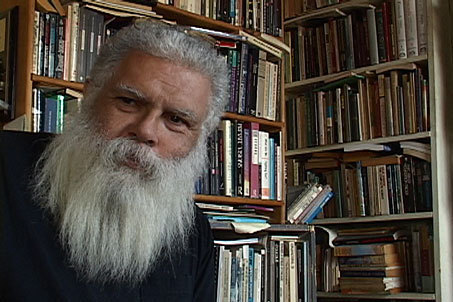Lost Techniques for Conveying the Unspoken and the Unspeakable
.

I've been reading the Summer 2011 issue of the Paris Review, which contains interviews with William Gibson and Samuel R. Delany. In his interview, Chip (as his many friends like to call SRD) makes an interesting observation (here cut down slightly for brevity and to be sure it falls into the category of "fair use"). In discussing the use of innuendo and the "coyly placed line of white space," employed at a time when certain things could not be written down explicitly and (subsequently) other things could be given greater power by employing that same technique, he says:
And, further down the page, he concludes:
Which is why we value Chip so greatly as a critic. Teaching students how to literally read between the lines is simply part of his duty as a teacher. But that final sentence is a speculation that opens vistas. Ever since, I've been thinking about the Bible and Gilgamesh and most especially the works of Homer and what I'm not seeing when I read them.
Oh, and . . .
I may have missed out on China, but that doesn't mean that I've given up on travel. More on that tomorrow.
Above: Samuel R. Delany. The camera loves him. You pretty much never see a bad photo of Chip.
*

I've been reading the Summer 2011 issue of the Paris Review, which contains interviews with William Gibson and Samuel R. Delany. In his interview, Chip (as his many friends like to call SRD) makes an interesting observation (here cut down slightly for brevity and to be sure it falls into the category of "fair use"). In discussing the use of innuendo and the "coyly placed line of white space," employed at a time when certain things could not be written down explicitly and (subsequently) other things could be given greater power by employing that same technique, he says:
Today, I watch seminar rooms of graduate students misread both Bester and Conrad because they no longer have to wonder about the possibility of such illegal elements occurring in the story and the compensating possibility of suggestion as a writerly strategy for representing both sex and violence. In Tiger! Tiger! the demonic antihero, Gully Foyle, invades Robin's exploded apartment and stalks across her living room to where she cowers away from him on the couh. There is a line of white space . . .Foyle, of course, rapes Robin. But many of Chip's students simply can't see this. Nor, in Joseph Conrad's Heart of Darkness , in which the death of the African woman that Kurz has been sleeping with, occurs in another line of white space, can half the students understand that when Kurz cries, "The horror! The horror!," he is thinking of her death.
And, further down the page, he concludes:
"If he raped her, why didn't the writer say so?" "If they shot her, why didn't Conrad show her fall dead?" my graduate students ask. It makes he wonder what other techniques for conveying the unspoken and the unspeakable we have forgotten how to read over four or five thousand years of "literacy."
Which is why we value Chip so greatly as a critic. Teaching students how to literally read between the lines is simply part of his duty as a teacher. But that final sentence is a speculation that opens vistas. Ever since, I've been thinking about the Bible and Gilgamesh and most especially the works of Homer and what I'm not seeing when I read them.
Oh, and . . .
I may have missed out on China, but that doesn't mean that I've given up on travel. More on that tomorrow.
Above: Samuel R. Delany. The camera loves him. You pretty much never see a bad photo of Chip.
*
Published on April 11, 2012 08:21
No comments have been added yet.
Michael Swanwick's Blog
- Michael Swanwick's profile
- 546 followers
Michael Swanwick isn't a Goodreads Author
(yet),
but they
do have a blog,
so here are some recent posts imported from
their feed.



